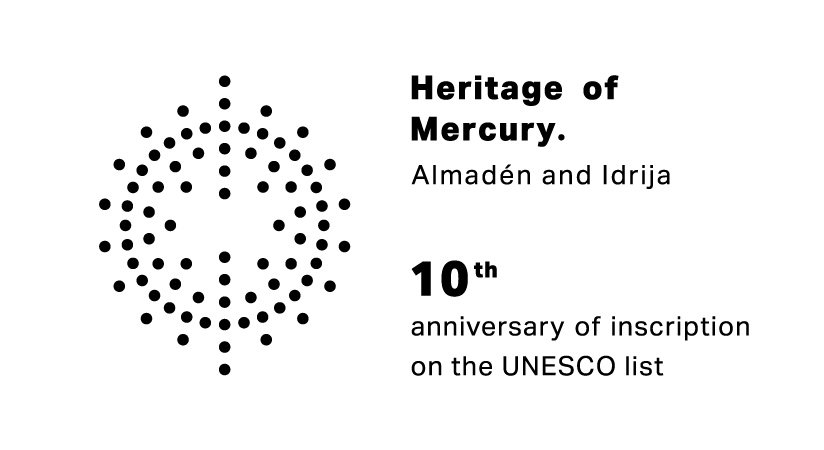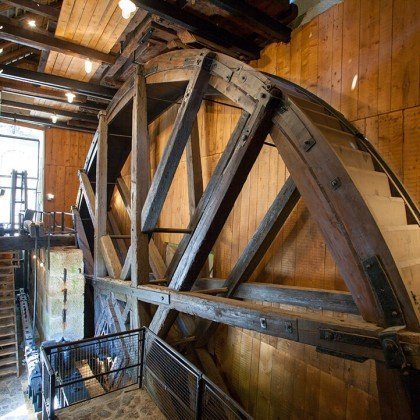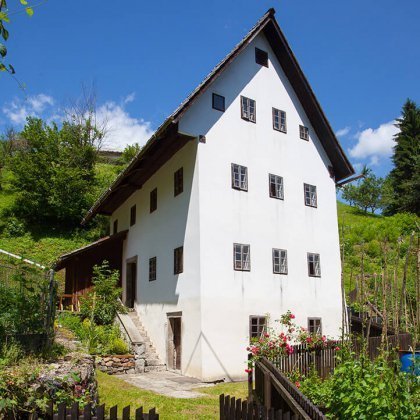UNESCO Heritage

In 2012, the mining heritage of two largest mercury mines in the world became a joint UNESCO World Heritage Site as “Heritage of Mercury. Almadén and Idrija”. The site encompasses the heritage of the two mines and mining in the widest sense of the word: the mine site, the pits, the shafts, the industrial buildings, as well as secular and sacral architecture connected to the operations of the mine and the life of the miners.
Idrija Municipal Museum is one of the managers of this complex heritage. We are entrusted with the protection and presentation of the Gewerkenegg Castle – formerly a mine administration building, today home to one of Europe’s best museums of industrial and technical heritage; the Francis’ shaft with restored mining machinery and equipment; Idrija “Kamšt” with the largest wooden drive wheel in Europe with a diameter of 13.6 m; and the Idrija Miners’ House, where we present the living culture and way of life of Idrija’s miners.
The museum strives to effectively inform and raise awareness among the public, including local people, about the exceptional value of the mercury heritage and the role Idrija has played in world history. We want to reinforce the awareness that, in the modern era, Idrija and Almadén have significantly shaped the whole of world history. The mercury extracted from these two mines was used in the amalgamation process in South American silver and gold mines from the mid-16th century onwards, which enormously increased the quantities of these precious metals on the market, directly or indirectly stimulating the development of the economy and enabling science, art, and culture in general to flourish on both sides of the Atlantic. This is the subject of the “Tracing Mercury” exhibition, held in the castle since 2016.
Being a UNESCO site is an opportunity for us to become visible and recognisable on the world tourism map, and to offer the knowledge we have about mercury and the protection, conservation, and presentation of industrial heritage to others. We are proud that the museum has been actively involved in the process of preparing the dossier and managing the nomination.
At its 13th session in Port Louis, Mauritius in 2018, the Intergovernmental Committee for the Safeguarding of the Intangible Cultural Heritage decided to inscribe Bobbin Lacemaking in Slovenia on the UNESCO Representative List of the Intangible Cultural Heritage of Humanity.
The nomination proposal was prepared in cooperation with experts from the Idrija Municipal Museum, the Museum and Galleries of Ljubljana – City Museum, the Škofja Loka Museum, the Slovenian Committee of the Organization for Bobbin and Needle Lace OIDFA, the Directorate for Cultural Heritage of the Ministry of Culture, the Slovene Ethnographic Museum, and with strong involvement from bobbin lacemaking associations, sections and groups, as well as students of lace schools.
Bobbin lacemaking is a handcraft technique of making lace by twisting and crossing threads wound on special, turned wooden sticks – bobbins. The process follows a pattern – a drawing on a paper template that is fixed to a cylindrical pillow inserted into a woven basket or wooden stand. The lacemaker also needs pins, a crochet hook, scissors, and a tool for winding thread onto the bobbins. Laces are made from linen and cotton threads, silk, more rarely wool, synthetic fibers or metallic threads. By using various bobbin lacemaking elements and techniques, and with locally recognizable patterns often marked by folk names (such as križavke, srčkovke, pogačke, močeradovke), lacemakers create lace in both measured lengths and finished forms. The lace is used to decorate clothing and fashion accessories, church and household textiles, as well as ceremonial spaces.
Due to its historical economic importance, bobbin lacemaking has survived to this day, though today it is mainly a leisure activity practiced mostly by retired women, children, and youth; men participate more rarely, mostly as makers of bobbin lace tools. Today, lace also serves other social functions. It is a source of inspiration for artistic creation in fashion, contemporary visual art practices, design, architecture, and even culinary decoration. Lacemaking is a form of creative expression for everyone involved in the lace-making process – from the pattern designer to the lacemaker. It also has therapeutic value.


